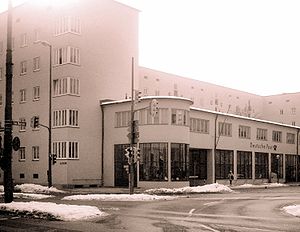Time flies! Believe it or not, yesterday ended our Munich "era". We moved out of our apartment and are getting ready to move to the San Francisco Bay Area in just a few days.
Thank you, Munich, for having us. It's been a blast.
Time flies! Believe it or not, yesterday ended our Munich "era". We moved out of our apartment and are getting ready to move to the San Francisco Bay Area in just a few days.
Thank you, Munich, for having us. It's been a blast.
On occasion, people claim I blog about too much geekery, so here you go with some dog content:
Yup, that's Lizzy, playing with her brand-new rubber chicken. She picked it herself at the store and oh-so-appropriately, it is a Bavarian chicken sporting Lederhosen.
Given her usual aversion to having photos taken of her, I was impressed that I got a set of four pictures before she bailed.
In a few weeks, my fiancée and I are going to move to Munich. We are going to live in a quarter called Sendling.
A U-Bahn stop in the neighborhood is called "Am Harras" and curious as I am I wanted to know what it was named after. Luckily, there's always Wikipedia. The German Wikipedia page on Harras reads (my translation):
In 1856, the former Löwenhof castle was torn down [...] and a remaining part of it was purchased by Robert Harras who opened a café there. It became a popular destination for people in Munich. The café was torn down as well in 1903, but the name remained as the name of the square located there. In 1930, the intersection was named after the café owner Robert Mathias Harras.
When I asked other people, one initial thought was that the name could be from Carl Zuckmayer's 1946 play "Des Teufels General" (The Devil's General), about a German air force general under the Nazi regime, both working for it and openly opposing the Nazi party. But, while this would have made sense, it turns out the square has been called like this much longer already, and the fictitious general and the former café owner have nothing in common but their last name.
 Photo: Harras post office, in a building from the 1930s. CC by-sa licensed on Wikimedia Commons.
Photo: Harras post office, in a building from the 1930s. CC by-sa licensed on Wikimedia Commons.